- JST Home
- /
- Strategic Basic Research Programs
- /
 CREST
CREST- /
- Research Director/
- Cell Control/
- [yuCell] Year Started : 2024
[yuCell] Year Started : 2024
Toshiya Ando
Constructive understanding of the evolutionary origins of nanocrystal formation in vivo
Grant No.:JPMJCR24B1
Research Director
Toshiya Ando
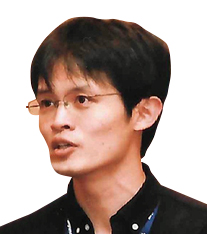
Project-specific Associate Professor
the Hakubi Center for Advanced Research
Kyoto University
Collaborator
| Yoshifumi Araki | Research fellow (PD) Graduate School of Environmental Science Hokkaido University |
| Fubito Nakatsu | Professor Graduate School of Medical and Dental Sciences Niigata University |
| Shigeo Hayashi | Guest Professor Graduate School of Medicine Kobe University |
Outline
We will establish a technological basis for manipulating innovative bio-nanomaterials based on the in vivo morphogenesis of microstructures with sophisticated physical properties. Focusing on the evolution of insect “shaft cells,” which form diverse functional cuticular nanostructures, we will develop a technology to control the microstructure of biological membranes/adjacent substrates at will, starting from the molecular basis of morphogenesis of endoplasmic reticulum network unique to shaft cells. We will use this technology to reconstruct the intracellular membrane dynamics of the ancestral state of regulatory molecules and to elucidate the principles of evolution of biological nanocrystals.
Satoru Okuda
Development of organ craft technology and elucidation of morphogenesis and evolution mechanisms
Grant No.:JPMJCR24B2
Research Director
Satoru Okuda
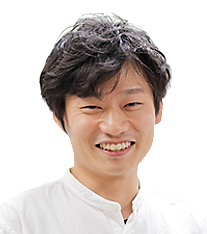
Associate Professor
Nano Life Science Institute
Kanazawa University
Collaborator
| Keisuke Isobe | Senior Scientist Center for Advanced Photonics RIKEN |
Outline
The developmental process of multicellular organisms is moderately robust, and this robustness is essential for the preservation of species. On the other hand, variability within this process allows room for species to evolve. In this study, we aim to elucidate the mechanisms by which both robustness and variability in the developmental process are balanced, by developing a unique organ craft technology that enables precise manipulation of epithelial morphogenesis.
Shiro Suetsugu
Morphing cell membranes at will for a universal delivery of biomaterials of choice
Grant No.:JPMJCR24B3
Research Director
Shiro Suetsugu
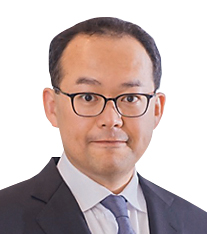
Professor
Graduate School of Science and Technology
Nara Institute of Science and Technology
Collaborator
| Takanari Inoue | Professor Cell Biology Johns Hopkins University |
| Koji Eto | Head/Professor (Deputy Director) Center for iPS Cell Research and Application Kyoto University |
| Kenichi Suzuki | Professor Institute for Glyco-core Research Gifu University |
| Akitsu Hotta | Principal Investigator / Associate Professor Center for iPS Cell Research and Application Kyoto University |
Outline
In multicellular organisms, biomaterials are delivered between cells for homeostasis and the function of life. However, a universal method for delivering any biological material in a desired amount to any target cell has not been developed. This team will conduct interdisciplinary research in cell biology, chemical biology, single-molecule imaging, platelet biology, and gene and cell therapy to develop universal delivery technology by morphing cell membranes at will.
Asako Sugimoto
Development of novel chromosome manipulation techniques based on nematode-specific chromosome rearrangement mechanisms
Grant No.:JPMJCR24B4
Research Director
Asako Sugimoto
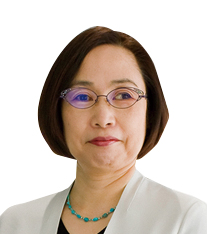
Professor
Graduate School of Life Sciences
Tohoku University
Collaborator
| Peter Carlton | Associate Professor Graduate School of Biostudies Kyoto University |
| Taisei Kikuchi | Professor Graduate School of Frontier Sciences The University of Tokyo |
| Kohta Yoshida | Specially-appointed Professor Brain Rsearch Institute Niigata University |
Outline
Nematodes, with over one million species, exhibit remarkable diversity in ecology, morphology, and genome architecture. In this study, we aim to uncover the molecular mechanisms underlying chromosome rearrangement phenomena observed in certain nematode species, such as programmed DNA elimination, where specific chromosomes are selectively discarded during development, and chromosomal fusion and fission, processes that contribute to speciation. By utilizing the rearrangement mechanisms discovered in nematodes, we seek to develop groundbreaking chromosome manipulation techniques that can be broadly applied across species.
Rei Narikawa
Playing bacteria with light
Grant No.:JPMJCR24B5
Research Director
Rei Narikawa
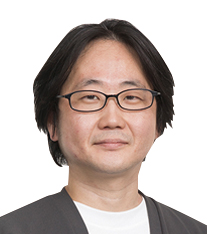
Associate Professor
Graduate School of Science
Tokyo Metropolitan University
Collaborator
| Gen Enomoto | Assistant Professor Faculty of Applied Bio-Science Tokyo University of Agriculture |
| Ryudo Ohbayashi | Associate Professor Graduate School of Science Tokyo Metropolitan University |
| Shogo Ozaki | Associate Professor Graduate School of Pharmaceutical Sciences Kyushu University |
| Setsu Kato | Associate Professor Graduate School of Integrated Sciences for Life Hiroshima University |
| Masaki Shintani | Professor Faculty of Engineering Shizuoka University |
| Keita Miyake | Assistant Professor Graduate School of Arts and Sciences The University of Tokyo |
Outline
In this project, we will develop various light manipulation tools based on the CBCR molecules, and manipulate bacterial growth, movement, and plasmid dynamics by using these tools and single-cell measurement techniques to elucidate bacterial behavior in detail. The new technologies and knowledge obtained from this project will provide breakthroughs for ‘playing bacteria with light,’ and are expected to have a large effect not only on basic research but also on a wide range of other fields.
Yoshie Harada
Quantum Smart Tool: Manipulation of neural/glial functions via thermal signaling control
Grant No.:JPMJCR24B6
Research Director
Yoshie Harada
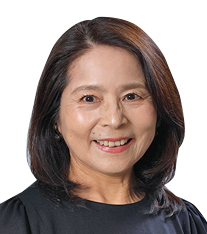
Specially Appointed Professor
Premium Research Institute for Human Metaverse Medicine (WPI-PRIMe)
The University of Osaka
Collaborator
| Ryuji Igarashi | Professor School of Life Science and Technology Institute of Science Tokyo |
| Kohki Okabe | Associate Professor Graduate School of Pharmaceutical Sciences The University of Tokyo |
| Ryuta Koyama | Director National Institute of Neurosicence National Center of Neurology and Psychiatry |
Outline
We propose a new biological logic called “thermal signaling” that focuses on changes in intracellular temperature. Using innovative fluorescent nanodiamond quantum tools, we control the temperature of specific structures and local regions within cells, and aspire to manipulate higher-order cellular functions. In particular, we intend to manipulate neural circuit formation, neural differentiation, and neural pathology through artificial temperature control in brain spheroids. We will create a technology platform for governing cell functions that can be widely applied to understanding and controlling dynamic physiological functions using heat as a enabler.













